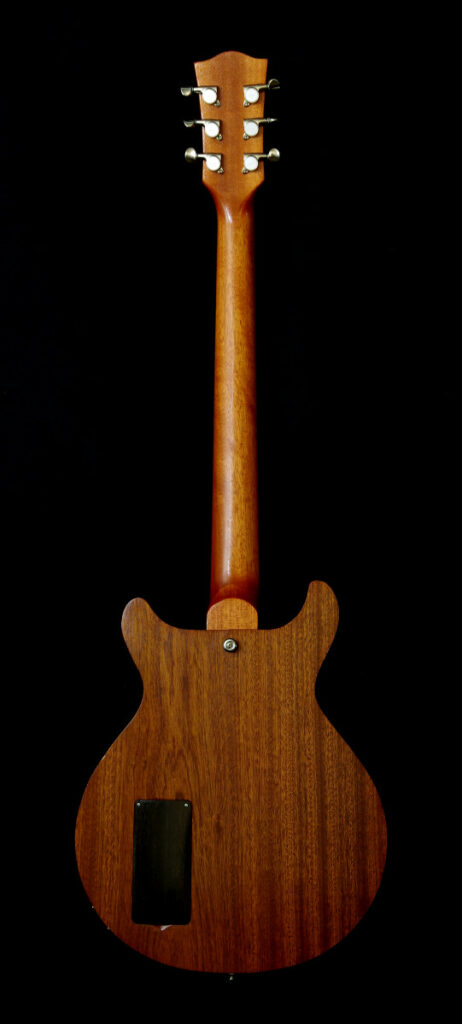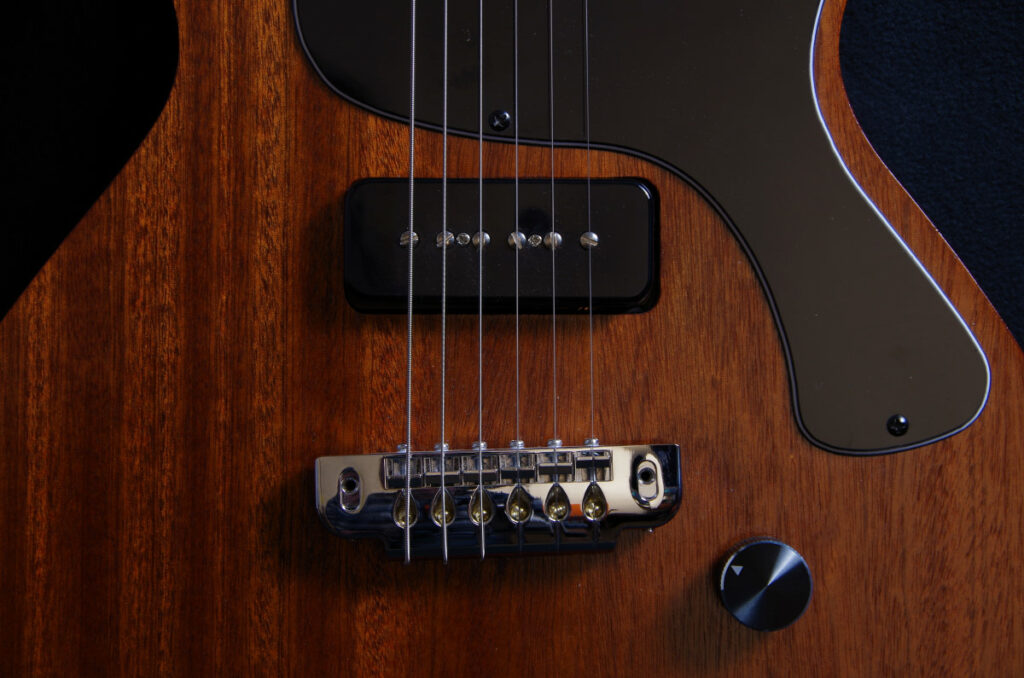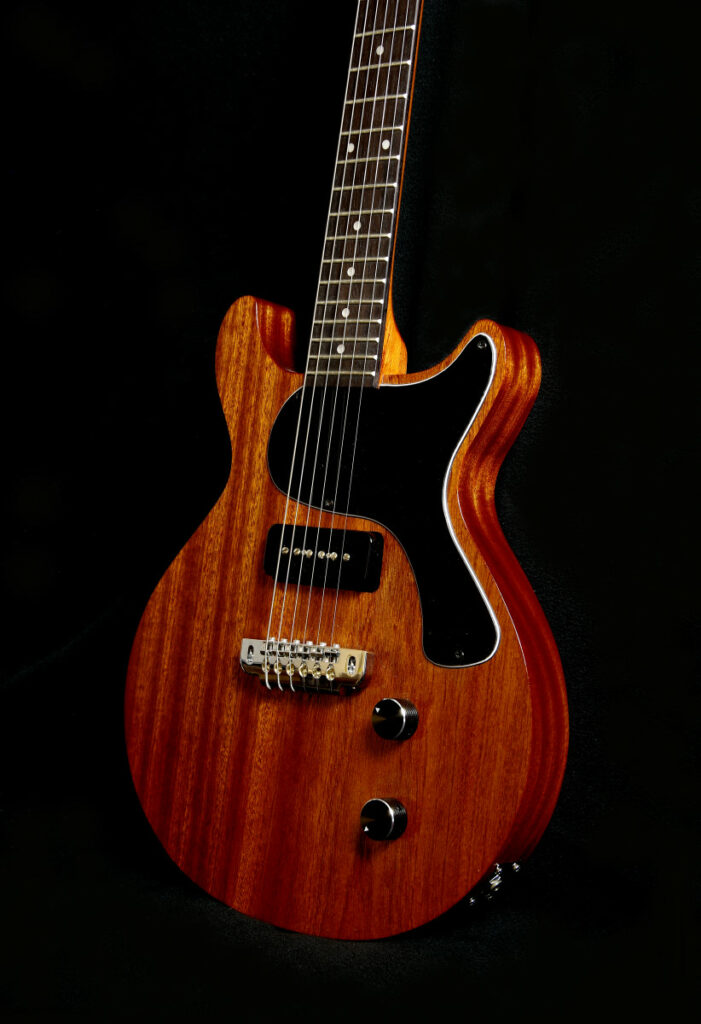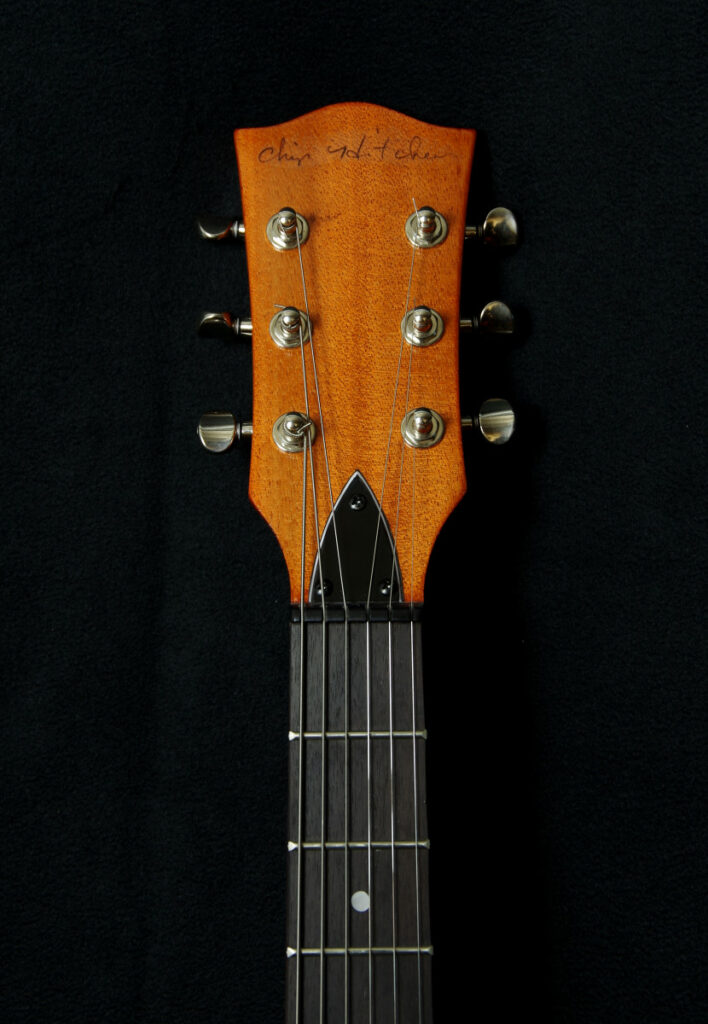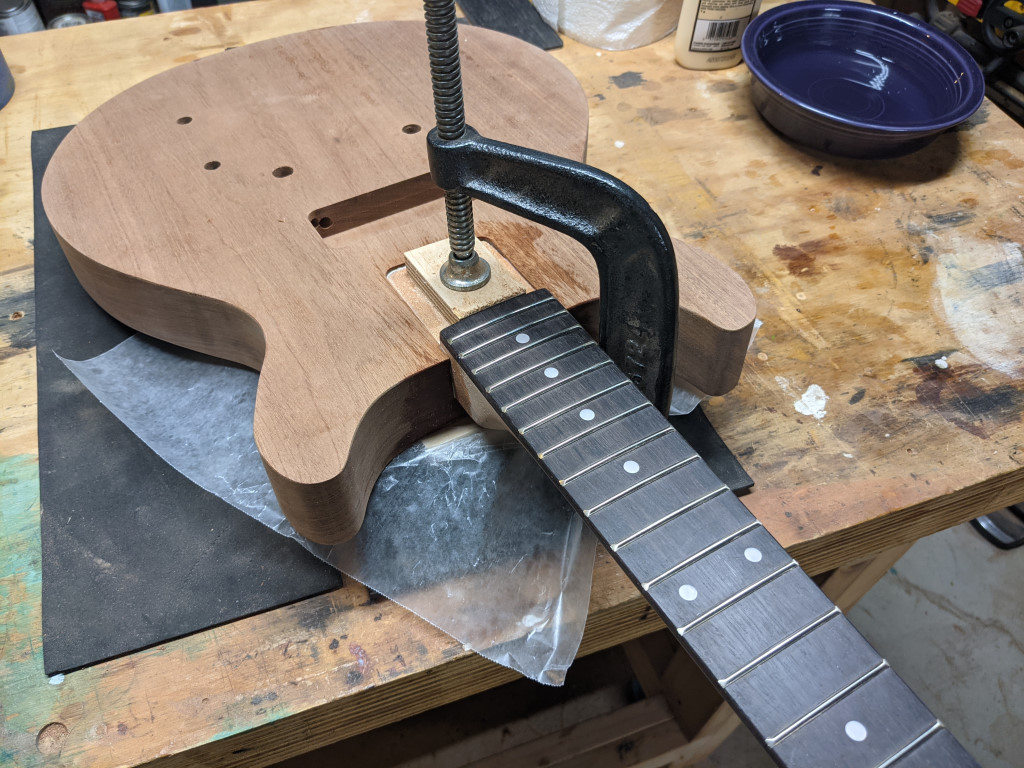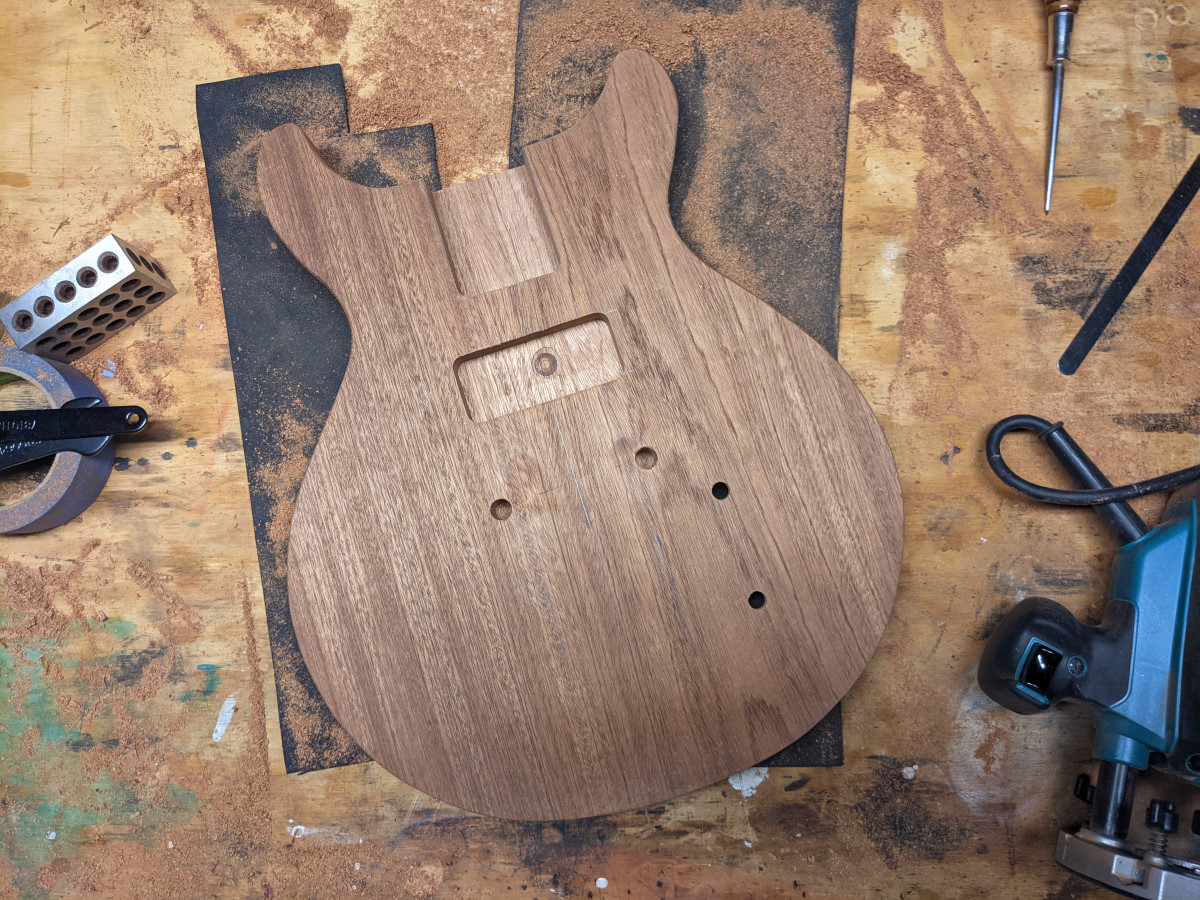
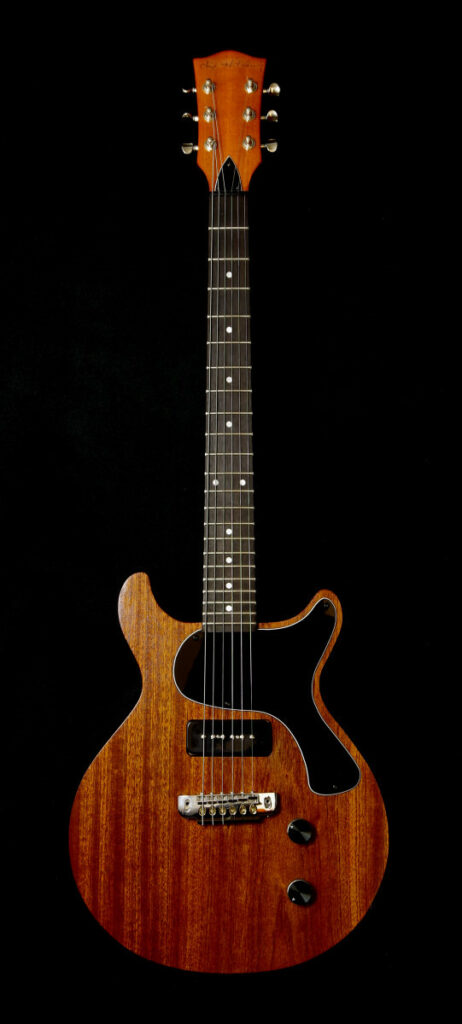
Something Different
August 2021
I wanted something different. P-90? Different scale length? Single pickup? Sure.
I started out on Fenders, and that style of guitar is what I naturally gravitate toward. Although they’ve made a bunch of different things over the years, they tend to have a lot of features in common. This was an active attempt to branch out from that.
Pickups have an enormous impact on how a guitar sounds. They’re the things that convert the mechanical energy of the strings into an electrical signal, and their design impacts what that sounds like when it gets to an amp. This guitar has a P-90 style pickup, which is an early pickup design. It’s a single coil, but it’s physically much larger than a standard Fender-style single coil, and is built differently. The tone is usually described as somewhere between a Fender-style single coil and a humbucker.
There’s also only one. Most electric guitars have multiple pickups, and the fact that they’re in different places means that they each “hear” the strings slightly differently and give the player tonal options. Over the years, some people have claimed that having only one makes a guitar sound and respond differently, since there are fewer magnetic fields trying to pull the string to rest. I have no idea if that’s true, but I liked the idea of building something simple. It’s also not right up against the bridge, where it would usually be on the guitar like this. People also claim that there are nodes where pickups sound better, but I definitely don’t believe that—I mean, nodes are real, but they move when you fret, and there’s no one place where you can avoid them (in my opinion).
Finally, the scale length (the length of the “working” portion of the string, from the saddle to the nut) is 24.75″, whereas most Fenders are 25.5″. Being 3/4 of an inch shorter may not sound like much, but it feels quite different.
Construction
I kept doing this thing during the pandemic where I’d want to build a guitar, but didn’t want to stress about any of the finicky guitar making operations, so I’d buy a kit, thinking it would be a nice paint-by-numbers sort of thing. Every time, I wound up hating most of the components of the kit, become enraged, then built my own parts and retrofitted them, which was maybe more difficult than just scratch building things correctly in the first place. This guitar is an example of that. The only thing that remains from the kit is the neck. Which is probably the weak part of this guitar, but it’s fine. I guess.
The body is sapele: poor man’s mahogany. Also known as Entandrophragma cylindricum, it’s technically not mahogany (which would have the genus Swietenia), but it’s cheaper, less threatened, and has a lot of similar characteristics. The neck is from the kit and is described as mahogany and rosewood, but I bet those words are being used colloquially. The bridge and tuning machines are Gotoh, and the pickup is a MojoTone ’56 Quiet Coil. That’s not a traditional P-90—it’s a side-by-side humbucker voiced to sound like a P-90, so it’s possible that I’m missing out on a little magic, but I couldn’t deal with the hum from a true single coil and this seems close enough for rock and roll. The guitar is lightly touched with red dye and finished with Tru-oil.
Sound
I like it. I find myself using the knobs way more than on a guitar with multiple pickups, and almost always have the tone turned down a bit. The lack of pickup options forces me to dial it in more precisely than I otherwise would. The following clip is the guitar straight into a Fender Deluxe, then with a Boner 4Ever kicked in.
